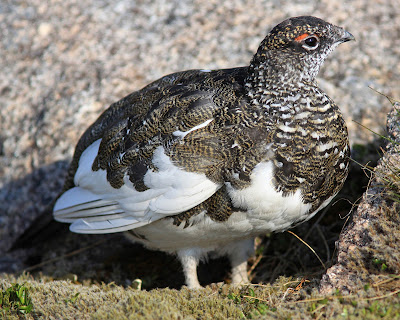Warm and sunny right from the start today and insects dominated the sightings. A drive to the north-east of the county yielded a Spotted Flycatcher at Fotheringhay before we strolled around Old Sulehay. The birds were all predictable but included an extraordinary number of juvenile Green Woodpeckers. Butterflies included plenty of Marbled Whites and some Small Heaths and Pyramidal and Common Spotted Orchids were on show.
A hot trundle then to Polebrook Airfield which produced three Turtle Doves (one singing and two in flight) and further specimens of Pyramidal Orchid and Marbled White. The bean and linseed fields towards Hemington attracted Yellow Wagtails in some numbers, and a couple of juvenile Little Owls were on show near Barnwell.
A hot and sticky walk around the Titchmarsh Reserve at Thrapston GP was literally buzzing with insects but few birds of note. Redshanks were vocal, three Oystercatchers were still present and a couple of broods of Tufted Ducks were on the old Barclaycard Pit. A single Little Egret was on the trout lake and dragonflies were well represented with good numbers of Brown Hawker, Emperor and Black-tailed Skimmer plus the usual damselflies and Banded Demoiselle. A single apparent Scarce Chaser showed well. Two Silver-washed Fritillaries dancing around alongside the river was unexpected. Plenty of other butterflies were on the wing including Comma, Small Tortoiseshell and a Red Admiral.
Plenty of small birds singing today were restricted to the species that attempt multiple broods in a season. As such, some warblers are now singing with almost the same passion as when they first arrived, and even Blackbird, Song Thrush etc are singing despite the very hot conditions.
A quick look from the Pioneer Hide at the Summer Leys reserve at Earls Barton provided views of five broods of Tufted Duck and good numbers of fledged Common Terns and Black-headed Gulls. Three Little Egrets, a couple each of Shoveler, Gadwall and Teal and four Wigeon were also on show and there were numerous Black-tailed Skimmers chasing each other around the muddy margins of the scrape. Emperor and Brown Hawker were here too and at least one Marbled White was on the wing by the main car park.
Regards
Neil M
 |
| Hoverfly sp |
 |
| Meadow Brown |
 |
| Pyramidal Orchid |
 |
| Red Kite |
 |
| Emperor Dragonfly |
 |
| Scarce Chaser. I hope I have identified it correctly - a new species for me! |
 |
| Tufted Duck brood |
 |
| Juvenile Sedge Warbler |
 |
| Comma |
 |
| Ringlet |






































+2nd+July+022+Red+Squirrel.jpg)
+2nd+July+234+Pine+Marten.jpg)









